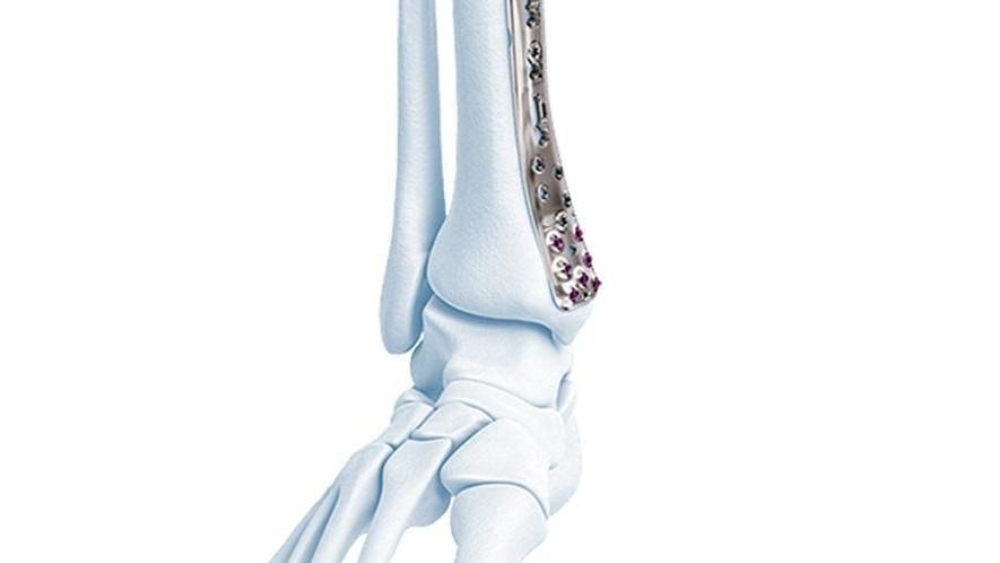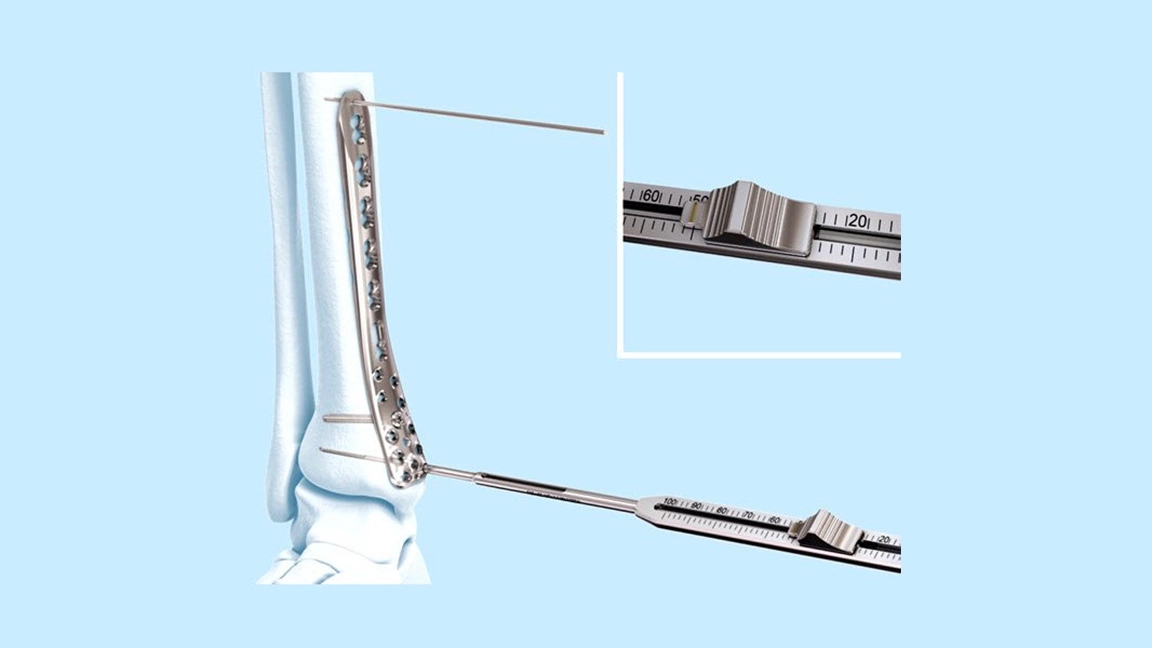Synthes VA Ankle Trauma - How Does It Help?
Synthes VA Ankle Trauma is used for ankle fixation in adults and children (12–21) whose growth plates have united, especially in osteopenic bone. The plates are a component of the DePuy Synthes Variable Angle Locking Compression (VA LCP) System, which combines traditional plating methods with technology for variable angle locking screws. The plates are in stainless steel and have an anatomical profile and shape along the limited-contact shaft as well as distally.
Author:Suleman ShahReviewer:Han JuOct 07, 202210.8K Shares515.4K Views

Synthes VA Ankle Traumais used for ankle fixation in adults and children (12–21) whose growth plates have united, especially in osteopenic bone. Here are all the details you need to learn about this.
Synthes Variable Angle Ankle Trauma 2.7mm/3.5mm Set
The plates are a component of the DePuy Synthes Variable Angle Locking Compression (VA LCP) System, which combines traditional plating methods with technologyfor variable angle locking screws.
The plates are in stainless steel and have an anatomical profile and shape along the limited-contact shaft as well as distally.
In order to give the flexibility of axial compression and variable angle locking, the Combi holes in the shaft portion of the Variable Angle LCP Plate combine a dynamic compression unit (DCU) hole with a variable angle locking screw hole.
The fixed-angle construct is made to make fixing small metaphyseal and epiphyseal segments easier in places where typical screw fixation may be difficult.
To provisionally preserve the reduction of articular fragments and to establish the placement of the plate in relation to the distal tibia and fibula, the K-wire holes accept wires up to 1.6 mm in diameter.
The periarticular plates are not suited for treating fractures of the tibia or metaphyseal region because they are thinner in that area. The main purpose of these is to treat articular injuries.
There are numerous parallels between the system's fixation and conventional plate fixation techniques, but there are also some significant advances.
With the aid of typical AO plating methods and variable angle locking screws, a fixed-angle build can be produced at the desired screw angle.
In multifragmentary fractures when screw purchase is limited and in fracture patterns where the screw direction needs to be changed to allow maximum fragment engagement, variable angle locking offers the possibility for fixed-angle constructions in osteopenic bone.
The variable angle screws work like numerous, tiny, angled blade plates rather than plate-to-bone compression to withstand patient strain, similar to conventional locking screws.
People Also Ask
What Does Synthes VA Ankle Trauma Set Consist Of?
A complete plating system, the 2.7mm/3.5mm VA LCP® Ankle Trauma system consists of:
- Tibia plates medially distal.
- Plates of the anteromedial distal tibia.
- Plates of the anterolateral distal tibia.
- T-plates and L-plates on the distal tibia.
What Is Synthes VA Ankle Technique Guide?
Synthes's most complete ankle plating system guide includes steps that offer low-profile variable angle locking compression plating (VA-LCP) options for the medial, anteromedial, anterolateral, and posterolateral aspects of the distal tibia as well as the lateral distal fibula, takes into account the preferences of each surgeon. You can find the complete technique guide here.
How Does Synthes VA Distal Tibia Plates Work?
The plates are in stainless steel and have an anatomical profile and shape along the limited-contact shaft as well as distally. In order to give the flexibility of axial compression and variable angle locking, the Combi holes in the shaft portion of the Variable Angle LCP Plate combine a dynamic compression unit (DCU) hole with a variable angle locking screw hole.
Conclusion
The modular design of the Synthes VA Ankle Trauma kits enables personalized implant choices. By getting rid of rarely used implants, this also lowers inventory and total expenditures.

Suleman Shah
Author
Suleman Shah is a researcher and freelance writer. As a researcher, he has worked with MNS University of Agriculture, Multan (Pakistan) and Texas A & M University (USA). He regularly writes science articles and blogs for science news website immersse.com and open access publishers OA Publishing London and Scientific Times. He loves to keep himself updated on scientific developments and convert these developments into everyday language to update the readers about the developments in the scientific era. His primary research focus is Plant sciences, and he contributed to this field by publishing his research in scientific journals and presenting his work at many Conferences.
Shah graduated from the University of Agriculture Faisalabad (Pakistan) and started his professional carrier with Jaffer Agro Services and later with the Agriculture Department of the Government of Pakistan. His research interest compelled and attracted him to proceed with his carrier in Plant sciences research. So, he started his Ph.D. in Soil Science at MNS University of Agriculture Multan (Pakistan). Later, he started working as a visiting scholar with Texas A&M University (USA).
Shah’s experience with big Open Excess publishers like Springers, Frontiers, MDPI, etc., testified to his belief in Open Access as a barrier-removing mechanism between researchers and the readers of their research. Shah believes that Open Access is revolutionizing the publication process and benefitting research in all fields.

Han Ju
Reviewer
Hello! I'm Han Ju, the heart behind World Wide Journals. My life is a unique tapestry woven from the threads of news, spirituality, and science, enriched by melodies from my guitar. Raised amidst tales of the ancient and the arcane, I developed a keen eye for the stories that truly matter. Through my work, I seek to bridge the seen with the unseen, marrying the rigor of science with the depth of spirituality.
Each article at World Wide Journals is a piece of this ongoing quest, blending analysis with personal reflection. Whether exploring quantum frontiers or strumming chords under the stars, my aim is to inspire and provoke thought, inviting you into a world where every discovery is a note in the grand symphony of existence.
Welcome aboard this journey of insight and exploration, where curiosity leads and music guides.
Latest Articles
Popular Articles
